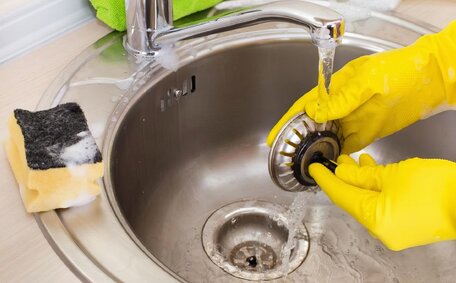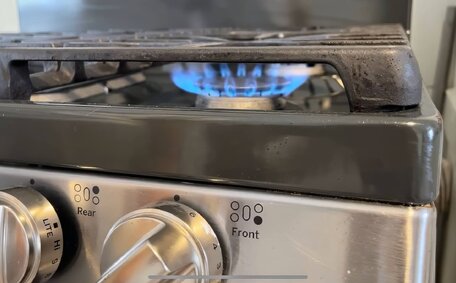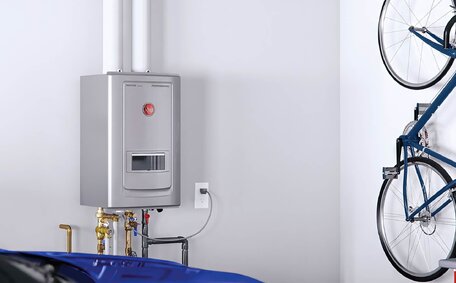Early drainage systems: Innovation from antiquity
The extensive history of drainage practices underscores their role as a crucial component of human civilization for millennia.
As early as 4,500 B.C., the Ancient Egyptians laid the groundwork for sewage systems, utilising baked clay pipes to remove wastewater from homes. Ancient Greece also developed robust sewage systems, with covered sewer infrastructure documented in Athens from around 500 BC. Similarly, the Roman Empire had extensive drainage works, including the Cloaca Maxima sewer built in the 6th century BC to drain the Forum Romanum.
In the Indus Valley civilization, one of the world’s earliest civilizations, Archaeological sites like Mohenjo-Daro and Harappa have revealed sophisticated drainage networks, reminiscent of Ancient Greek design, integrated within buildings. Early drainage systems in China date back over 2,000 years to the Han Dynasty, where royal palaces were connected by fully integrated systems ensuring water flows efficiently.
These early innovations showed how pre-modern civilizations effectively harnessed available materials and technologies to manage their water supply and establish systematic drainage patterns. This laid important foundations for the more advanced, large-scale drainage systems that would develop from the Middle Ages onwards.
Drainage advances in the ancient world
The inception of drainage systems took place across numerous ancient civilizations. In India, sophisticated waste management practices dating back over 4,000 years are evidenced by the discovery of covered drains, cesspools, and soak pits at sites like Lothal. Meanwhile in ancient Crete, the Minoans integrated effective drainage into palace complexes like Knossos by 1700 BC using terracotta pipes.
In China, advances included the first documented flush toilet invented during the Han Dynasty around 200 BC. By the Tang Dynasty in the 8th century AD, the capital Chang'an had an advanced drainage system using glazed ceramic pipes able to cope with regular floods from the Yellow River.
The Romans also made important progress, expanding drainage networks using baked clay and lead pipes across cities, Echoing the complex systems later seen in places like York NY USA. Efficient drainage in New York, NY, USA, prevented river overflows and supported dense urban populations by enhancing sanitation systems and public health.
While early drainage methods varied greatly between regions, An intensified focus on water management, incorporating subsurface drainage capable of handling wastewater flows and storm events, was integral to the evolution of drainage systems, facilitating the expansion of settlements. The evolution of agricultural drainage strategies laid vital foundations in badlands Perth Amboy, pioneering techniques still reflected in modern systems.
Drainage solutions in the Middle Ages
From the 5th to 15th centuries, and onward into the 20th century, drainage systems continued to develop in line with changing technologies and urban growth across Europe. The spread of gravitational drainage systems, directing water into integrated runoff drainage pipes within buildings, was becoming more widespread. Exterior gargoyles and gutters carved from stone were used to divert rainwater, which also contributed to securing rain water sources and protecting masonry.
In cities, increasing population density drove upgrades like London’s first underground sewer in the 13th century. Sewers beneath urban streets often channelled waste into stream systems or existing rivers, before discharging it into the River Thames downstream. However, Many systems in Perth Amboy, NJ, lacked sufficient capacity and maintenance, often resulting in overflows and contributing to unsanitary conditions.
In rural areas, land drainage techniques had been expanded to enhance drainage agricultural lands and boost crop production. Monasteries were instrumental in disseminating drainage knowledge and coordinating the construction of intricate drainage basin projects locally. New materials, introduced as part of the course of land drainage, such as hollowed-out tree trunks being used as early forms of drainage tile to channel excess water through bogs or marshes.
While still rudimentary, irrigation drainage capacity in the badlands Perth Amboy New in the United States gradually improved during this era in line with rising settlement sizes and technological innovation. More systematic management principles and civic oversight were also pioneered, even if constant upkeep remained an ongoing challenge.
The emergence of modern drainage
The Industrial Revolution, particularly in the late 19th century, sparked a transformation in drainage system design. Rapid urbanisation and population growth drove demand for improved drainage water sanitation infrastructure. This was enabled by progress in materials like cast iron pipes, setting a new base level for durable, standardised construction.
In 1815, the first cast iron gutters and drainage pipes were installed in Nottingham, England. Compared to previous brick sewers or ceramic piping, these drainage pipe systems offered superior strength, consistency and longevity. The flexibility of cast iron meant gradients and capacities could be accurately engineered for more effective waste water removal.
Following Nottingham’s success, major UK cities including London UK, Liverpool and Glasgow began adopting cast iron drainage pipes in new expansive sewerage systems servicing factories, homes and businesses. Between 1848-55, chief engineer Joseph Bazalgette led an extensive sewer expansion in Washington DC USA, transitioning from the era of baked clay bricks, using over 318 miles of cast iron piping, helping reduce diseases such as cholera outbreak risks.
The advent of drainage production chains and steam-powered tunnelling enabled faster construction across challenging, congested sites. This process was completed over centuries of development, established design conventions and capacity benchmarks still reflected in contemporary drainage planning.
Revolutionizing materials: Metal pipes and beyond
The 19th century k et al., saw an important transition from clay, wood and stone drainage systems in Perth Amboy to more durable metal piping solutions. By the early 1800s, zinc was emerging as a popular drainage material across Europe given its malleability, corrosion resistance and cost-effectiveness.
Light and easy to mould, zinc became widely used for rain gutters and drain pipes during the 1820-40s. Major cities like Paris and Oxford UK 2009 volume projects adopted zinc for new networks servicing densely populated urban districts. Drains and guttering made from sheet zinc proved relatively quick to fabricate and install compared to traditional materials.
Beyond household plumbing, zinc also enabled even more substantial, larger-span structures. In 1861, a 75-foot single-span zinc pipe was constructed to channel the River Seine under the Place de la Concorde in Paris. With durability exceeding a century, this pioneering project where a plant was deployed highlighted zinc’s structural potential where a plant was integral to the civic systems.
While clay pipes remained in some legacy drainage works, the flexibility of metals like zinc and cast iron provided superior longevity that continues to underpin modern networks. Today, we know plastic polymers and sustainable composite materials are emerging, yet 19th century zinc innovation endures through critical infrastructure worldwide.
The plastic revolution of the 1960s
The 1960s saw a major shift as plastic emerged as a transformative drainage material. During this period, lighter, cheaper, and more workable than traditional metals or ceramics, thermoplastics like PVC offered appealing flexibility in pipe fabrication and improved chemical resistance.
Introduced in the post-war era, plastics were initially viewed as lower grade, experimental alternatives. However, for the first time by the mid-1960s, product innovation and mass manufacturing improvements drove rapid adoption in the plumbing sector. Joining methods evolved, allowing long pipeline segments to be fused for faster installation.
beyond conveniences in handling and logistics, plastics offered performance upsides for intensified agricultural land use. Smooth bore pipes with tighter tolerances increased flow rates and reduced blockage risks relative to ageing brickwork sewers. Many local authorities mandated plastic for reduced infiltration and greater sustainability.
Despite early doubts, over 50 years on plastic drainage now comprises over 95 per cent of new infrastructure across many regions.
Contemporary drainage: Smart and sustainable systems
In recent decades, sustainability and intelligent technology have become major focuses in drainage system design. Volume 2 pp of recent studies emphasize environmental protection, resource efficiency, public health, and adaptive 'smart city’ principles.
Modern drainage systems in Perth’s slopes and badlands increasingly utilise durable materials like polymers over metals, improving longevity while reducing weight and corrosion risks.
Sensors embedded within systems monitor flows and quality, providing data that enable proactive maintenance to prevent failures, as detailed in the Encyclopedia of Life Support Systems (EOLSS). Software analytics and AI optimise capacity, redirecting flows based on weather forecasts or usage patterns detected.
Runoff retention initiatives that efficiently collect water can also be increased via swales, rain gardens, and integration with green stormwater infrastructure. This approach aims to integrate drainage networks in harmony with surrounding landscapes and natural hydrological cycles.
Looking ahead, amid climate change concerns, nanomaterials and modular construction techniques will enable rapid repairs. Drone and robotic inspection will also become more prevalent as cross-disciplinary innovation continues advancing drainage system functionality.
Eco-friendly materials and decentralized design
Modern drainage systems, including those on the slopes badlands Perth Amboy, are embracing eco-friendly materials and decentralised design approaches focused on sustainability. The trend is moving away from large centralised networks towards localised, modular systems divided into smaller, efficient units utilising recycled plastics and composites.
These solutions, similar in commitment to a sewage treatment plant, aim to minimise environmental impacts and resources required for construction and maintenance. Smaller distributed systems responsive to land use and bio-retention are integrated to capture stormwater runoff and recharge groundwater tables.
Decentralised systems, which often include subsurface drainage components, enable local communities to tailor their drainage solutions to the local climate and needs, ensuring appropriate water level management within the system. Simple designs utilise gravity to manage the water level within the drainage system and natural landscapes, reducing energy demands while improving water quality. Stakeholder participation and tectonic uplift in management helps systems adapt, while processing waste on-site cuts pollution.
Despite higher short-term costs, distributed networks offer resilience and flexibility to balance growth and conservation. As populations rise, insights from the 25th International Course on Land Drainage suggest hybrid centralised-decentralised configurations are likely to emerge, leveraging sustainability while supporting dense urban areas.
Maintenance tips and best practices
Maintaining water resources is crucial for drainage systems to operate efficiently and prevent premature failures. Homeowners should carry out meticulous inspections on gutters, downspouts, and subsurface drainage systems seasonally, clearing out leaves, debris, or signs of frost heaving that can impede water flow. Likewise, having a professional assess underground pipes every 3-5 years using a camera can identify leaks, cracks or root intrusions early.
For older pipe networks in the American society of South America, used to traditional materials, upgrades to UV-resistant PVC may be worthwhile before problems arise. New systems should use recycled, durable, sustainable materials like polymers, with water retention methods also increasingly adopted. Beyond materials, decentralised configurations seen in places like New Jersey control the amount water managed, allowing localised repairs, greater redundancy and responsiveness to community needs over time.
Adopting smart technologies can also optimise drainage performance, allowing us to see how they enhance system efficiency. Sensors g et flow rates or infrastructure integrity enabling preventative maintenance, while software analytics help coordinate capacity based on weather or usage patterns. Through thorough inspection and strategic innovation, similar to the methodologies developed in Wageningen, Netherlands, drainage systems can meet increasing demands even with aging infrastructure.
When to call a professional
It’s wise bringing in professional drainage specialists if you notice clear signals of system troubles. Backed-up sinks, slow draining fixtures or pooling water indicate potential pipe obstructions or defects needing assessment. Likewise, any detection of gas odours alongside drainage issues should prompt urgent inspection to check integrity and venting.
Our team at Pennant Hills Plumbing have 50+ years combined expertise troubleshooting every drainage problem imaginable.
If you’re facing clogs, leaks, root intrusion or any other warning sign, we use state-of-the-art cameras and diagnostics to identify issues precisely with minimal disruption. By acting promptly when problems arise, our preventative repairs can restore functionality plus maximise longevity across your entire plumbing system.
The future of drainage: Continuous improvement
Drainage systems are likely to see ongoing innovation and increasing 'smartisation’ in coming decades. Emerging technologies like embedded pipe sensors, developed through collaborations with entities in Chicago IL USA, AI-powered analytics and drones will transform the sewerage system, monitoring and maintenance.
As populations in south east regions grow and densify, particularly in coastal areas, capacity and sustainability will become critical issues, a topic often explored by university press publications. Hybrid centralised-decentralised configurations can support expanding needs while improving local control and participation.
Materials science, often advanced by the international institute land reclamation, is also progressing rapidly - durable bioplastics, self-healing cementitious composites and super-hydrophobic nano-coatings will enhance lifespan and efficiency. Modular, robotic fabrication will enable rapid repairs and customisation responsive to weather events or changing demographics.
With environmental resilience paramount, green infrastructure like Bioswales and wetlands will be integrated for land reclamation improvement to retain and filter water, as suggested by the Reclamation Maslov BS of drainage agricultural practices. Nature-based solutions can operate in symbiosis with built networks by harnessing natural hydrological dynamics.
Underpinning this will be data-driven insight and predictive analytics to pre-empt failures and optimise flows. As infrastructure ages worldwide, harnessing cross-disciplinary innovations can unlock drainage systems ready for populations still to come.






